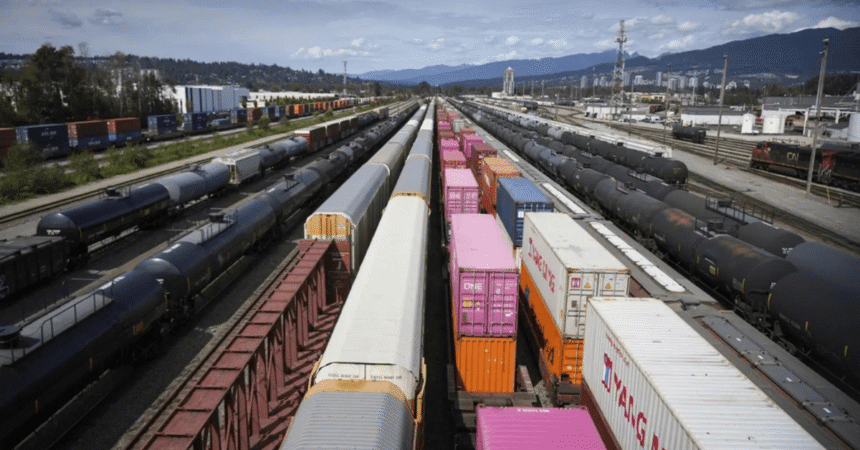Canada’s economy is facing a significant threat due to the rail shutdown, which could result in billions of dollars in losses and job cuts if it continues for weeks. The simultaneous stoppage of the majority of Canada’s rail freight by Canadian National Railway and Canadian Pacific Kansas City has already begun to impact the economy.
Economists and analysts warn that a two-week rail strike could result in a $3 billion loss in nominal GDP this year, while a four-week strike could lower GDP by nearly $10 billion in 2024. This could also lead to 49,000 job losses in the year. The economic impact could be minimal if the stoppage lasts less than a week, but a prolonged shutdown would have severe consequences.
The rail shutdown would have a ripple effect on various industries, including:
- Agriculture: Grain and fertilizer shipments would be severely impacted, affecting farmers and the food supply chain.
- Manufacturing: Shipments of goods, including chemicals and automobiles, would be delayed, affecting production and supply chains.
- Consumers: Higher prices and reduced availability of goods would impact consumers, exacerbating inflation.
Canada’s economy is already facing challenges, including lacklustre growth, high interest rates, rising unemployment, and a wave of mortgage renewals next year. A protracted rail stoppage would only add to these woes, leading to economic stagnation.
The government and stakeholders must work together to resolve the dispute and get the rail network running again. A swift resolution is crucial to mitigate the economic damage.
#Canada #RailShutdown #EconomicCrisis #JobLosses #GDP







